



![]()
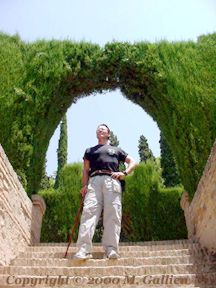

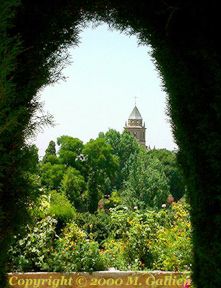
Within the entrance gates of the Alhambra, the pathway diverges in two directions: one towards the city that lies within its walls and the Royal Palace; the other towards the gardens, known as the Generalife. Centuries ago, this was the summer home of the Moslem kings that ruled the region. Nowadays, it is an oasis of greenery, flowers and flowing water. A series of bushes have been well-groomed to create labyrinths and archways (left). Water is constantly flowing here - cooling the air as well as supporting the plants in the garden. It even streams through the handrail of the steps in the upper level of the Generalife (center). Across the gardens, we could see part of the Royal Palace peeking above the trees (right).
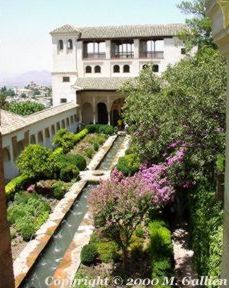
|
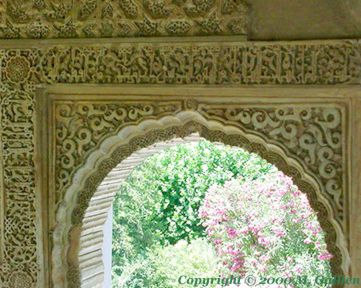
|
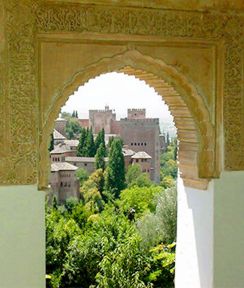
|
Within the Generalife, we visited the Summer palace, where you can imagine Moorish princesses resting near the cooling pools of water (left), trying to beat the oppressive heat of the Spanish summers. The gardens were full of flowering color (center), a welcome break from the endless desert mountains and plains in which we were working and living. From the upper level of the summer palace, we could see part of the Alcazaba, or fortress, which protected the Alhambra.
![]()
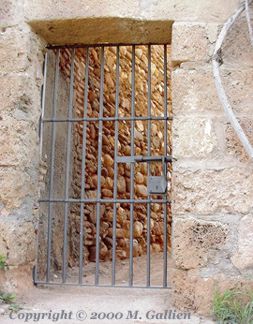
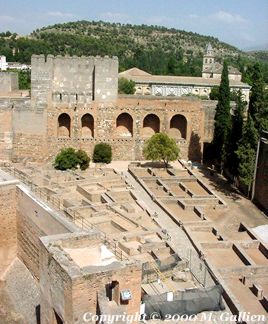
After walking through the gardens, we headed off to the Alcazaba. Like much of the ancient city of the Alhambra, it has suffered the abuse of the ages - although the thickness of the walls surely looks like it would be great protection (left). The main courtyard of the Alcazaba (right) contains the ruins of the soldiers' quarters at right and the armoury in the center.

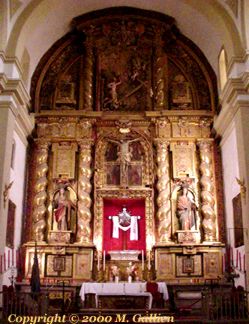
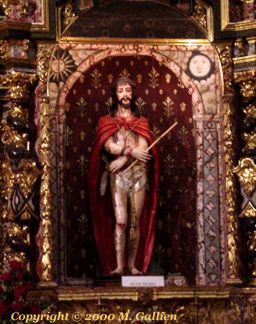
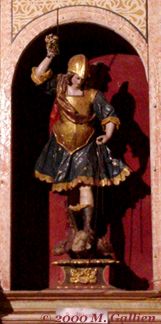
After the Christian rulers Ferdinand and Ysabel conquered the Moors and reunited Spain in the 15th century, the Alhambra became one of their residences. On the site of the mosque, they erected a Catholic chapel, the Capilla Real (or Royal Chapel) of Santa Maria, which is open to the public. The main altar (left) is made of ornately carved wood, with the upper panel left natural, not gilded. The artwork of this small church is like many other churches in Spain - simply spectacular. This "Ecce Homo" was especially poignant, as were the small altars to numerous Catholic saints, like this St. Miguel (right). The one unusual item we didn't expect was the replacement of candles with electric light bulbs for the faithful to light - I can only guess to decrease the risk of fire.
![]()
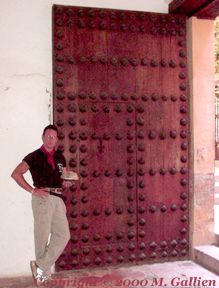
|
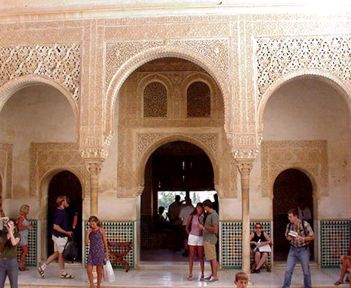
|

|
The number of visitors to the Alhambra is so great that, when you arrive, you receive a ticket with the time at which you can center the Royal Palace. You are allowed to enter the great door (left) for up to 30 minutes - this is your "window of opportunity." Once inside, you can stay as long as you like, and enjoy a place full of remarkable architecture, art, and history. This central courtyard opened onto buildings that once housed kings, explorers and artists. The tiles have maintained their vibrant colors, and the large leather chair within the courtyard beckon the visitor to sit and admire them for "just a bit longer."
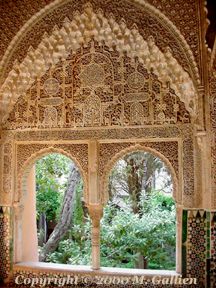
|
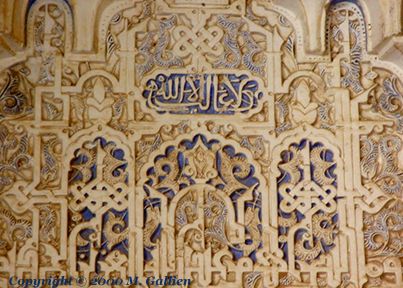
|
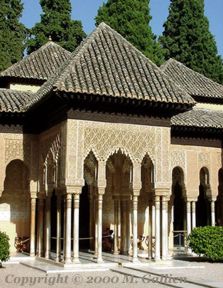
|
In the early 19th century, before the Alhambra was considered a cultural treasure Washington Irving lived in the Royal Palace, and his stay inspired him to write Tales of the Alhambra, a book full of both history and mythology. The window at the left is outside the room where Irving lived, and the Alhambra now hosts a special museum dedicated to Irving's life and works. The ornate Arabic carvings were originally colored, and a few areas give a hint as to how colorful it must have been centuries ago (center). There is also a repeating motif seen in the upper center of this picture, which means "Allah is the only conqueror." To the right is one of the pavilions surrounding the Patio of the Lions, the small parallel channels are where the lion fountain drain. Running water is an integral part of the Alhambra, and its sound and the cooling effect are hypnotic - people can be found asleep every time you turn around. It truly is, as Irving wrote, "the sleepiest fortress in the world."
�Copyright 2000 Mary Gallien. All contents, unless otherwise noted, are the property of Mary Gallien or used with permission of the copyright owner. All text and photos herein may not be reproduced or distributed without the express written consent of Mary Gallien, her official representative, or the copyright owner.
This page designed and maintained by Scorpio Rising. Send Comments